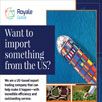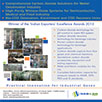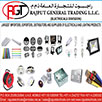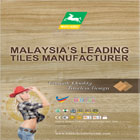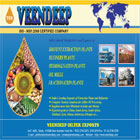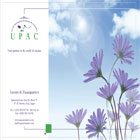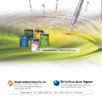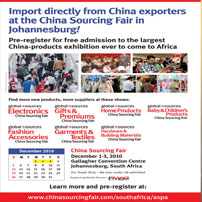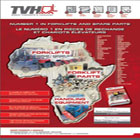

M a r k e t N e w s
Ethiopia: Projecting Technology-Based Change in Sugar Supply
Posted on : Friday, 12th August 2016
Sugar sector is one of the major focus area that would play important role in the forthcoming political economy of the country.
Currently, industrial development becomes an important component and the key direction of the government to shift from agriculture-led to industry-led economy. Thus, to hasten the development of the industry sector, the need for advanced technologies is very crucial.
Recently, the Ministry of Science and Technology has been developing a national technology road-map for about 17 main sectors. The main benefit of technology road-map is to provide technology alternatives and information to reach at better technology investment decisions.
As a component sector for the Ethiopian technology road-map, the Sugar sector is one of the major focus area that would play important role in the forthcoming political economy of the country.
The Ethiopian Herald met the Sugar Agronomy Senior Expert Tadese Negi to briefly discuss on the role of technology development for the sugar manufacturing sector.
Briefing the background of the sugar industry in Ethiopia, Tadese stated that the sugar manufacturing in Ethiopia had been started in 1950's by a Dutch company known as Handles-Vereening at Wonji and then expanded to Metahara in early 1960's. Latterly, the third sugar factory established at Finchaa in 1990's. At the present time, the Ethiopian Sugar Corporation administers six sugar factories namely Wonji-Shoa, Metahara, Finchaa, Tendaho, Arjo-Dedessa and Kessem; and nine sugar development projects at Kuraz, Tana Beles, and Welkayit.
Regarding the sugar productivity, Tadese explained that the actual sugarcane plantations has covered an area of 98,986 hectares and could produce about 400,000 tons of sugar and 25,388 metric cube of ethanol per year. Up on the completion of the new sugar development projects, the country will have a potential of producing 4.6 million tons of sugar and 31,341 metric cube of ethanol per year, and the area under sugarcane cultivation will rise to about 400,000 hectares.
According to him, though the local sugar supply in 2014/15 was 0.65 million, it couldn't satisfy the demand, and additional sugar was imported annually to fill up the deficit.
Since recent years, the share of raw sugar to the total sugar export has been about 60 per cent. He ascertained that the per capita sugar consumption in Ethiopia is 5-6 kg while the world average per capita consumption is 21 kg in 2016.
The road-map for the sugar sector predicted that the per capita consumption will substantially rise due to population increase and improvement in living standards as a result of fast economic growth. Therefore, white sugar production would be manufactured for local consumption, while raw sugar and part of refined sugar would be targeted for export.
Internationally, the major sugar exporting countries are Brazil, Thailand, Australia, and Guatemala. These countries accounted for 68 per cent of global exports from 2010 to 2014. The major importing countries are Indonesia, United States, China, Former Soviet Union, EU, Korea, Japan, Algeria, and Canada. Imports by these countries accounted for about 35 per cent of all sugar imports from 2010 to 2014.
Ethiopia is currently a net importer of sugar but after the completion of the ongoing sugar factory projects, the production will substantially increase. Apart from satisfying the local demand, the surplus sugar will be exported to world market. The major challenge in sugar market is the change in global sugar price that would affect the export sector. With the bilateral agreements, the potential markets for Ethiopian sugar are neighboring east African countries, Middle East, South Korea and China.
According to Tadese, the total world sugar trade is projected to increase by 8.3 per cent, from 45.8 to 49.6 million metric tons over the 2014-2024 periods. World sugar price is projected to increase from USD 0.17 per lb in 2014 to USD 0.22 in 2024. The price of raw and refined sugar in the international market is increasing. Therefore, Ethiopia will benefit from exporting these strategic products such as raw and refined sugar.
Likewise, raw sugar accounts for more than 50 percent of internationally trade volumes. Nearly 12 million tons of global raw sugar trade is conducted under preferential agreements. Although many countries produce sugar, ten countries such as Brazil, Australia, Thailand, Cuba, Guatemala, South Africa, Mauritius, Colombia, El Salvador and Fiji dominate global raw sugar exports, accounting for nearly 90 percent of global export trade. These exporters sold nearly 80 percent of the global refined trade.
As the road-map stated that the country would be among the top ten competitive technologically advanced sugar industry hub in the world by 2026. According to Tadese, several enabling conditions were identified for the road-map implementation which include supportive government policy, geographic location and suitable agro-ecology, infra-structures such as roads and railways, an increase in local and global demand for sugar. In addition, there has to be access to copy & adopt technology, then ensure the availability of advanced technologies to just attain the potential of the sugar industry as a whole.
With regard to the major impediments to achieve the target, Tadese mentioned that lack of market, finance limitations, shortage of skilled manpower, less priority to research and development, and poor sugar price fluctuation would be the major barriers to boost quality and high sugar productivity.
In general, despite there has been some challenges to meet the anticipated goals by 2025, the government has been exercising efforts to develop technology road-map for different sectors. Experiences from different countries such as, South Korea and USA, show that technology road mapping is crucial for rapid economic growth. American experience also shows technology road mapping is an effective tool for making strategic research and development decisions.
Basically, the function technology road-mapping has begun in the late 1980s in several American corporations, such as Motorola, to determine the best pathway to address future markets. Then, the technology road-mapping began to be applied to industry-wide activities, focusing on energy-intensive industries in the US during the 1990s.
Recognizing the importance of technology road-mapping, the government has on the way to launch the national technology road-map for important sectors which encompasses the sugar sector.
Indeed, the sugar industry in Ethiopia has an indispensable economic role by creating employment, generating revenue, and transferring technology. When all the expansion projects and new sugar development projects are completed, the corporation will have a potential of producing 4.6 million tons of white sugar per year.
The intention of the government is not only to satisfy the local demand but also to get share in the world market though there may be furious global competition especially from countries that are both technologically advanced and have low cost of production.
In order to meet the future market needs and identify technology alternatives, proper planning tool is required. Thus, technology road-map can help sugar industry strive for increased innovation competitiveness and gain market share.
Though this sugar industry technology road-map is aligned with the national industrial development strategies and corporate strategic plans, it covers the period of 10 years from 2017-2026. Although numerous products such as confectionary, bagasse and ethanol based and animal feeds productions are possible in the sugar factory setups, the focus of the road-map is raw sugarcane, crystal sugar, ethanol and electricity.
On the other hand, the sugar value chain in Ethiopia is relatively short consisting of mainly sugarcane growers, factories, sugar corporation, wholesalers, retailers and consumers. Final consumers of sugar include households and industries. Wholesalers and retailers selling sugar to consumers.
All stakeholders should take the need for advanced technologies as a very crucial instrument to hasten the growth of the country's economy. It is significant to base technological issues to bring back Ethiopia's grandness in innovating technology during the old stone-age era. The national technology road-map would guide to identify the differences between ways of starting to produce and boosting productivity.
In addition, the technology road-map should be a document that would play epoch-making role to the success major sectors like sugar. Although the sugar sector has prepared a ten year strategic vision, the industries must move towards growth and make a difference through a technology-based change in sugar supply.
In sum, as there has been strong commitment from the government, the productive sectors need to work together with private enterprises, higher learning and research institutions, international organizations to ensure the country's vision to reach to middle income status by 2025.
Source : allafrica.com













